Affiliation:
1Department of Landscape Architecture, School of Architecture and Design, Harbin Institute of Technology, Harbin 150006, Heilongjiang, China
2School Key Laboratory of Cold Region Urban and Rural Human Settlement Environment Science and Technology, Ministry of Industry and Information Technology, Harbin Institute of Technology, Harbin 150006, Heilongjiang, China
ORCID: https://orcid.org/0009-0006-5276-9550
Affiliation:
1Department of Landscape Architecture, School of Architecture and Design, Harbin Institute of Technology, Harbin 150006, Heilongjiang, China
2School Key Laboratory of Cold Region Urban and Rural Human Settlement Environment Science and Technology, Ministry of Industry and Information Technology, Harbin Institute of Technology, Harbin 150006, Heilongjiang, China
Email: litongyu@hit.edu.cn
ORCID: https://orcid.org/0000-0003-3531-0175
Affiliation:
1Department of Landscape Architecture, School of Architecture and Design, Harbin Institute of Technology, Harbin 150006, Heilongjiang, China
2School Key Laboratory of Cold Region Urban and Rural Human Settlement Environment Science and Technology, Ministry of Industry and Information Technology, Harbin Institute of Technology, Harbin 150006, Heilongjiang, China
ORCID: https://orcid.org/0000-0002-9614-4310
Affiliation:
3Department of Computing, Goldsmiths, University of London, SE14 6NW London, United Kingdom
ORCID: https://orcid.org/0009-0009-1877-9933
Explor Digit Health Technol. 2025;3:101155 DOI: https://doi.org/10.37349/edht.2025.101155
Received: November 07, 2024 Accepted: April 28, 2025 Published: June 26, 2025
Academic Editor: Subho Chakrabarti, Postgraduate Institute of Medical Education and Research (PGIMER), India
Aim: This study aimed to evaluate virtual reality restorative environments (VRREs)’ impact on university students’ mental well-being, investigate factors affecting VRRE perception and psychological recovery, understand virtual environments’ healing mechanisms, and provide recommendations for university virtual healing spaces.
Methods: Semi-structured interviews were conducted with 32 participants to develop a VRRE perception evaluation system with five core and fourteen main categories. The system was then used to assess 13 virtual natural environments. Mental recovery effects were measured among 44 university students using the Schulte test (attention), Positive and Negative Affection Scale (mood), and physiological sensors (stress).
Results: VRREs demonstrated significant positive effects on participants’ psychological recovery. Different virtual environments showed varying impacts on attention, negative affect, and stress levels, while effects on positive affect were consistent across environments. Virtual extraterrestrial space environments yielded the strongest improvements in attention and stress reduction, whereas mixed forest settings were most effective in decreasing negative affects. Structural equation modeling revealed that participants’ VRRE perceptions significantly influenced psychological recovery through seven of fifteen pathways.
Conclusions: VRREs represent an effective intervention for supporting university students’ mental well-being. Different virtual environments offer distinct psychological benefits, with environment perception playing a crucial role in recovery outcomes. These findings provide valuable insights for designing targeted virtual healing spaces in university settings.
University students globally are experiencing an increase in mental health issues, with anxiety and depression being particularly prevalent [1, 2]. Studies showed alarming rates, including a 34.0% global depression rate among medical students, that peaked at 43.0% in Asia [3]. Additionally, 11.0% of university students faced depression, and 7.04% grappled with anxiety disorders [4]. In the U.S., a 2020–2021 health survey of 4,000 students revealed a 60% criteria-meeting rate for mental health problems, marking a 50% increase since 2013 [5]. A UK cohort study found heightened distress entering university, correlating with severe behaviors and a doubled demand for mental health support services [6]. Failure to address these issues promptly could lead to severe consequences, impacting physical health, academic performance, and lifestyle and potentially causing social isolation and misbehavior [7–10]. The deterioration of students’ mental health in higher education is a pressing public policy concern.
Natural environments, known for reducing stress and alleviating fatigue, play a crucial role in individual health [11]. In the 19th century, landscape architect Frederick Olmsted recognized the health benefits of natural settings for city dwellers, pioneering the concept of “Restoration” [12]. In the 1980s, Kaplan and Talbot [13] introduced the widely used term “Restorative Environment”. A concept that has since become integral to psychological research, and theories such as Ulrich et al.’s [14] “Stress Reduction Theory” and M. Kaplan and S. Kaplan’s [15] “Attention Recovery Theory”. In these theories, “Recovery” refers to the process of psychological and physiological restoration triggered by a particular context and configuration of the environment. It denotes the psychological and physiological restoration process triggered by specific environmental contexts, impacting various resources like mood, self-arousal levels, and task performance.
Restorative environments are often closely related to natural elements. Ulrich et al. [14] (1991) proposed that restorative environments should have trees, water, and other natural elements for survival and psychological well-being. Environments with some complexity and stimulating elements can also reduce stress. The Kaplans’ framework linked nature to the relationship between the human being and the environment and focused on an individual’s directed attention and recovery from fatigue. They distilled four essential restorative characteristics of nature: being away, fascinating, extent, and compatibility [16]. Both theories evolved to enhance the structured and systematic assessment of environmental quality, each complementing the other [16, 17].
Globally, diminishing opportunities for natural experiences result from social changes, urbanization, and reduced access to natural spaces like wild areas, reserves, urban parks, and green spaces [18–20]. Factors such as COVID-19 lockdowns, work constraints, long distances, and high travel costs further constrain access [21–23]. Consequently, recent research on restorative environments explored artificial alternatives, including the indoor integration of natural elements and the presentation of pictures and videos of natural settings. Technological advancements in virtual reality introduced “immersive nature”, offering visual and auditory stimuli for immersive nature experiences. This innovative approach not only substitutes for direct outdoor contact but also strengthens the human-nature connection, fostering public health and environmental awareness. The evolving technological landscape presents new opportunities to cultivate a harmonious relationship between humans and nature [24].
VR technology, validated as a therapeutic tool, is gaining prominence in the flourishing field of virtual reality restorative environment (VRRE) research. Numerous studies have demonstrated its positive impact on overall well-being, quantifying physical and mental recovery benefits through various tools. Valtchanov et al. [25] (2010) found that immersing individuals in virtual nature significantly alleviates stress and cognitive fatigue. Measures like skin conductance level (SCL) and heart rate (HR), along with emotional responses using the Zuckerman inventory of personal reactions (ZIPERS), were employed to quantify physiological and psychological recovery effects. Research confirmed benefits in stress management, fatigue reduction, anxiety alleviation, memory improvement, creativity enhancement, vitality, and security across various populations. A wide range of people were involved in the research, including the general urban public, healthcare professionals, office staff, and exam-taking students [26–35].
VR healing is booming in the medical field and is increasingly affordable in experimental and clinical applications. VRREs allow patients to immerse themselves in soothing virtual spaces, promoting both physical and mental health. Widely used in wound treatment, cancer care, and oral therapy, VRREs provide diverse audiovisual environments to distract and alleviate patient pain and anxiety [36]. Natural elements, such as simulated skies and virtual ocean images, have proven most effective in reducing pain sensations for patients, including burn victims [37–41]. The immersive experience in virtual natural environments can reverse stress responses, reduce mental resource consumption, decrease the need for analgesics and antidepressants, and enhance the overall quality of patient survival [42].
Environmental psychology and theories of environmental perception explore the intricate interaction between humans and their surroundings. Johnson et al. [43] (2010) emphasized the significant support individuals derive from their perceptions, with specific neural mechanisms governing cognitive and action perception. Their research underscored the connection between perceived spatial features of natural environments and instant well-being, considering factors like sound perception, bird species richness, naturalness, and a sense of security [44]. Existing research on VR primarily focuses on the impact of visual design on physiological and psychological well-being, neglecting a comprehensive exploration of users’ overall perception of virtual spaces. The scarcity of studies on perceptual factors influencing virtual experiences highlights the need for more comprehensive research in this area.
In healthcare, as VRREs are primarily used in rehabilitation medicine, it is crucial to recognize their potential to address significant psychological challenges in university students. This study aimed at university students to investigate the psychological healing effects of VRREs to help enhance their mental well-being and fill research gaps on the overall perception and healing mechanisms of VRRE experiences.
Healthcare design aims to create environments designed to enhance comfort and well-being by studying people’s behaviors in the environment. This design approach based on evidence-based practice research combines the best research evidence, clinical expertise, and subject expectations [45]. This study combined the qualitative and quantitative approaches. First, the influences on university students’ perceptions of VRREs were investigated. Then, the results were applied to an evidence-based experimental study with a randomized crossover design. Participants served as their own control, and the effects of the VRRE experience on psychological recovery were measured repeatedly. The research program was reviewed and approved by the Research Ethics Committee of Harbin Institute of Technology. All students who participated in the study provided informed consent and received comparable compensation.
During the investigation of perceptual influences of VRREs, the semi-structured interviews were used to collect data information and the grounded theory was employed for analytical processing.
Grounded theory is based on the systematic collection of data to find the core concepts that reflect a particular phenomenon or thing, and then formulate a theory by establishing the links between these core concepts [46]. This approach avoids making theoretical assumptions at the study’s outset, instead generating theory through a disciplined process of qualitative data analysis. There has been no systematic research on perception of virtual environments, so Grounded Theory is applicable to this exploratory investigation.
45-minute semi-structured interviews aimed to uncover factors influencing students’ perceptions of VRRE. By organizing the relevant literature and setting questions related to the research objectives, the logic was gradually deepened to guide the respondents to express their views freely while avoiding over-guidance. The interview outline consisted of two parts. The first was basic information about the interviewees. The second was six open-ended questions related to virtual environment perception, including: (1) Do you know what a VRRE is? (The VRREs were presented to all interviewees to prevent cognitive bias and to understand the interview topic). (2) Has the experience of the VRREs affected you in any way? (3) Can you talk about how you are feeling now? (4) What features or factors of the environments have influenced you (subjective or objective is fine)? (5) Are you willing to actively participate in a VRRE experience (under what circumstances would you like to do so)? (6) Do you have any other ideas about VRREs? Data saturation was reached after 32 interviews, signifying no added information about VRRE perception, making this cohort the sample for analysis.
The original interview material was collected and organized using ATLAS. Ti software. 2/3 of the interview material was extracted and then analyzed in three phases (Supplementary material). (1) Open coding, refining the target, and clarifying the concepts through tagging and preliminary induction methods. (2) Principal axis coding, using cluster analysis to initially correlate the extracted categories, establish the concepts of ethnicity and summarize them into “axes”. (3) Selective coding, which ended the open coding and merged the axis codes into more concise concepts, filling in the details to form a complete storyline and theoretical structure. According to the Theory of Data Saturation, the generated content was tested again by the three phases mentioned above using the remaining 1/3 of the interview material [46]. It showed that the current results contained a rich set of theoretical categories. In addition to the five core categories and fourteen main categories, no new categories or constituents were identified. Therefore, the VRRE perception evaluation system constructed in this study is reasonable (Figure 1).
The experiments were conducted in the Laboratory for Digital Innovation Design of Harbin Institute of Technology. HTC VIVE head-mounted device was used to provide the 3D stereoscopic experience for participants [47]. The VR scenes allowed 360-degree head and body movement. To achieve comprehensive coverage of diverse types of natural environments, there were six natural environments classified, including 13 specific VR natural scenes from Pexels (Table 1).
VRRE scenes
| VRRE scenes | |||
|---|---|---|---|
| Forest | |||
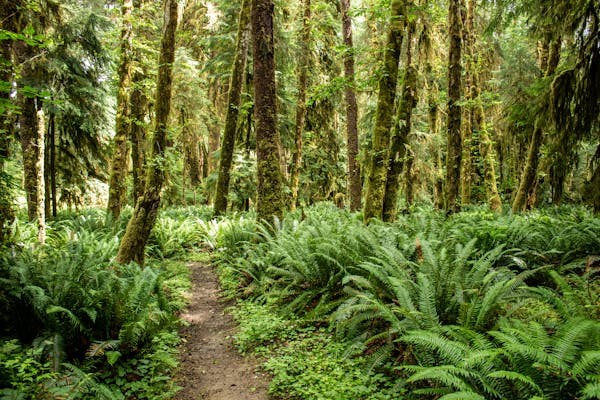 | 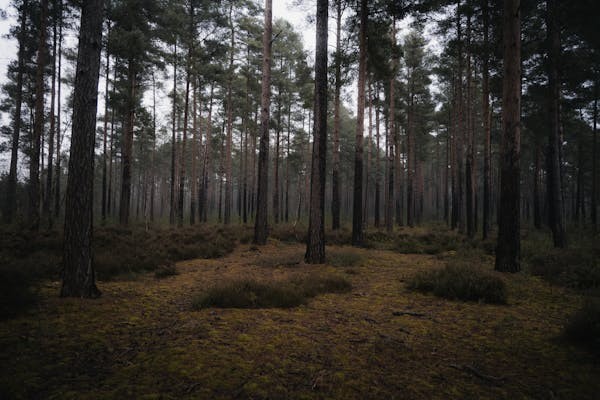 | 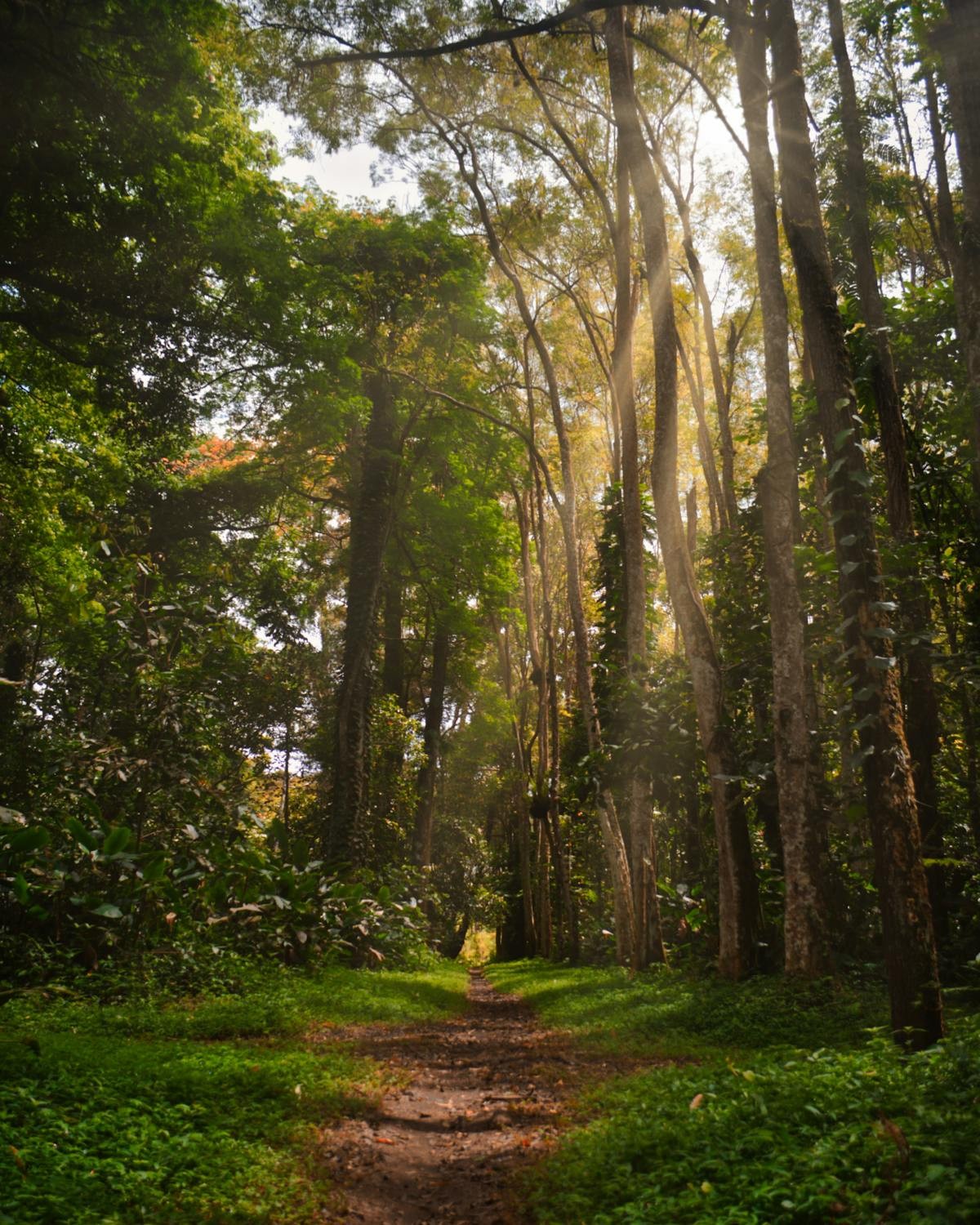 | |
| a. Broad-leaf forest | b. Coniferous forest | c. Mixed forest | |
| Tundra | Desert | ||
 |  | 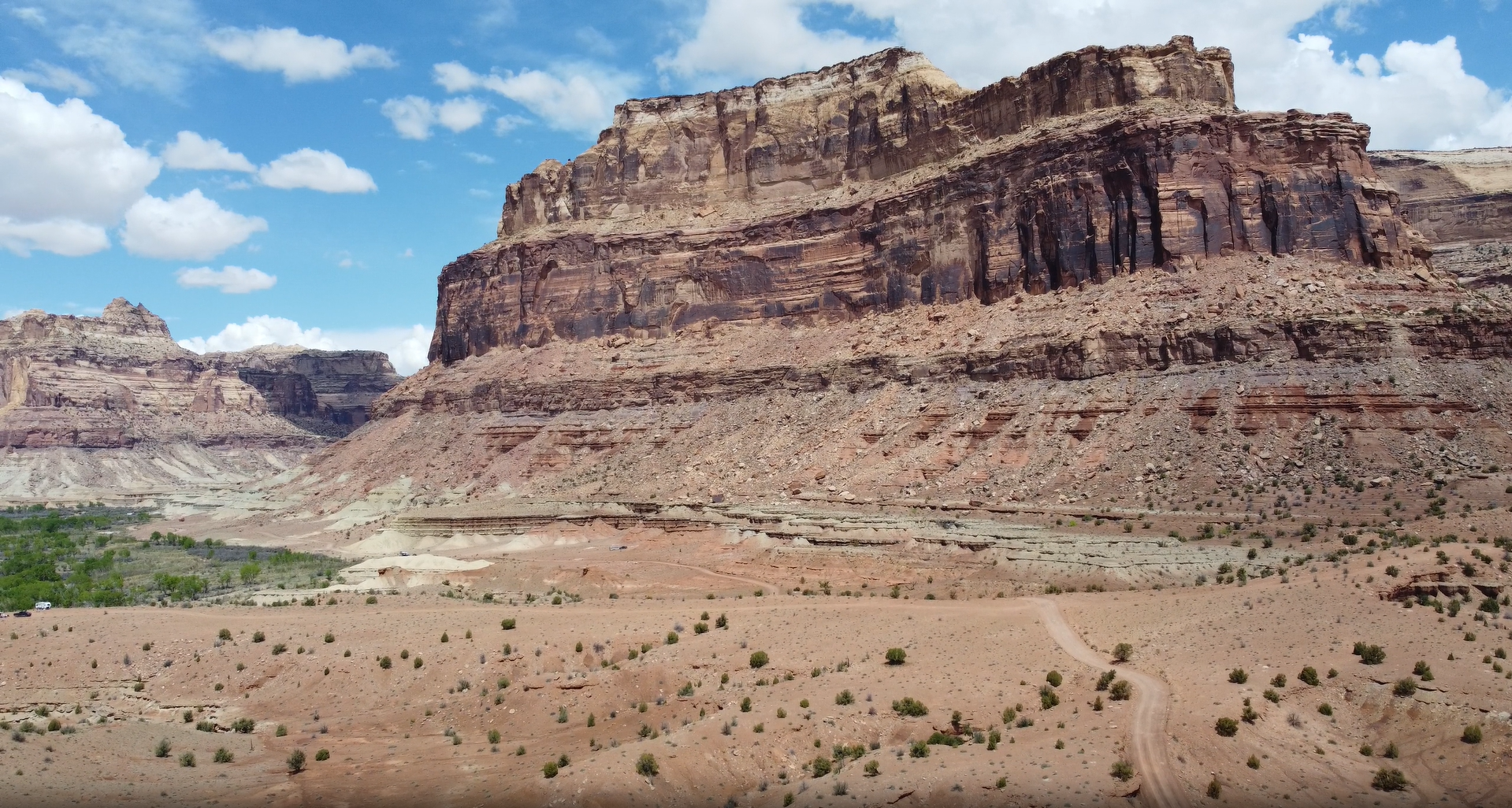 |  |
| d. High-latitude permafrost | e. High-altitude permafrost | f. Stony desert | g. Sandy desert |
| Water | Grassland | ||
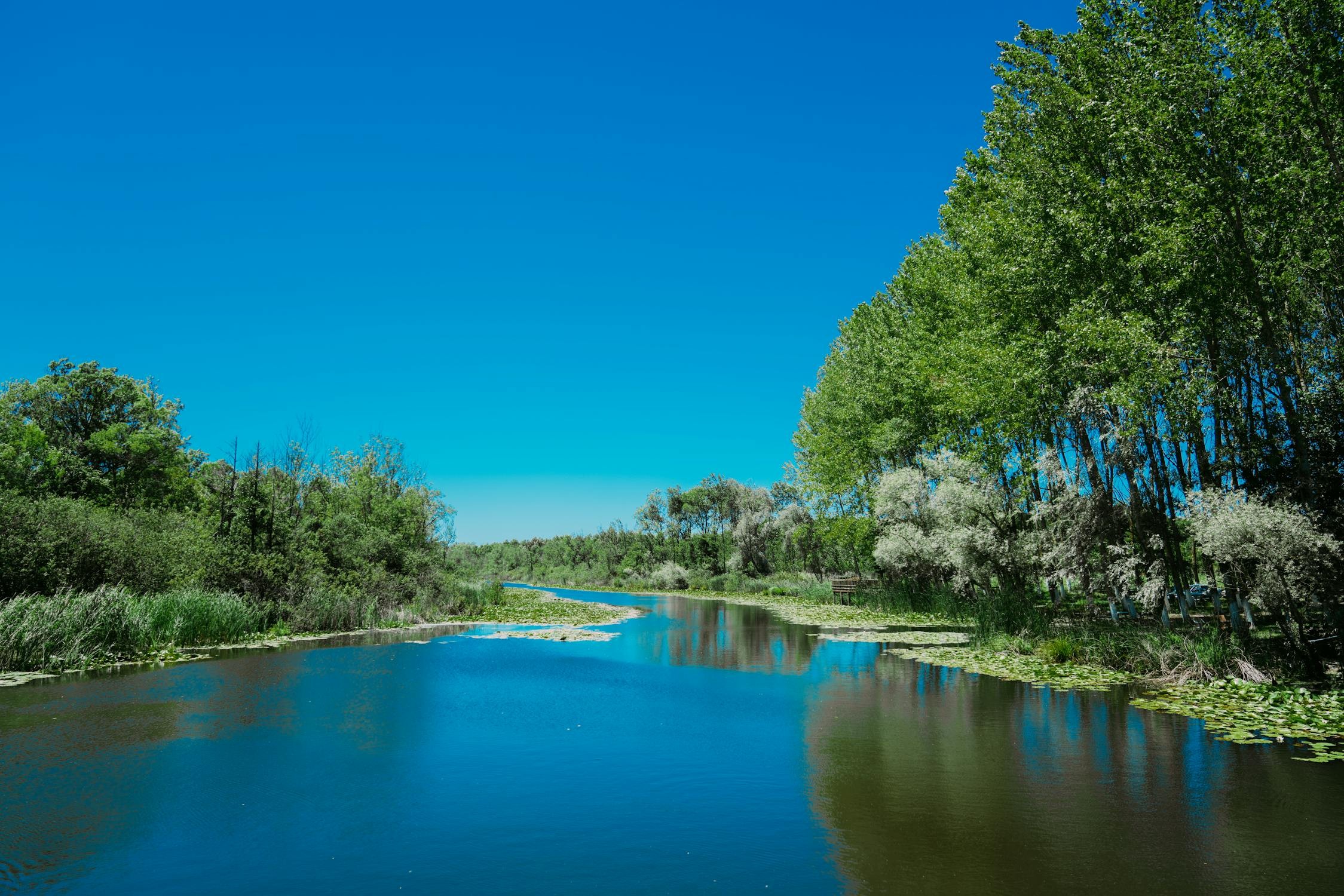 | 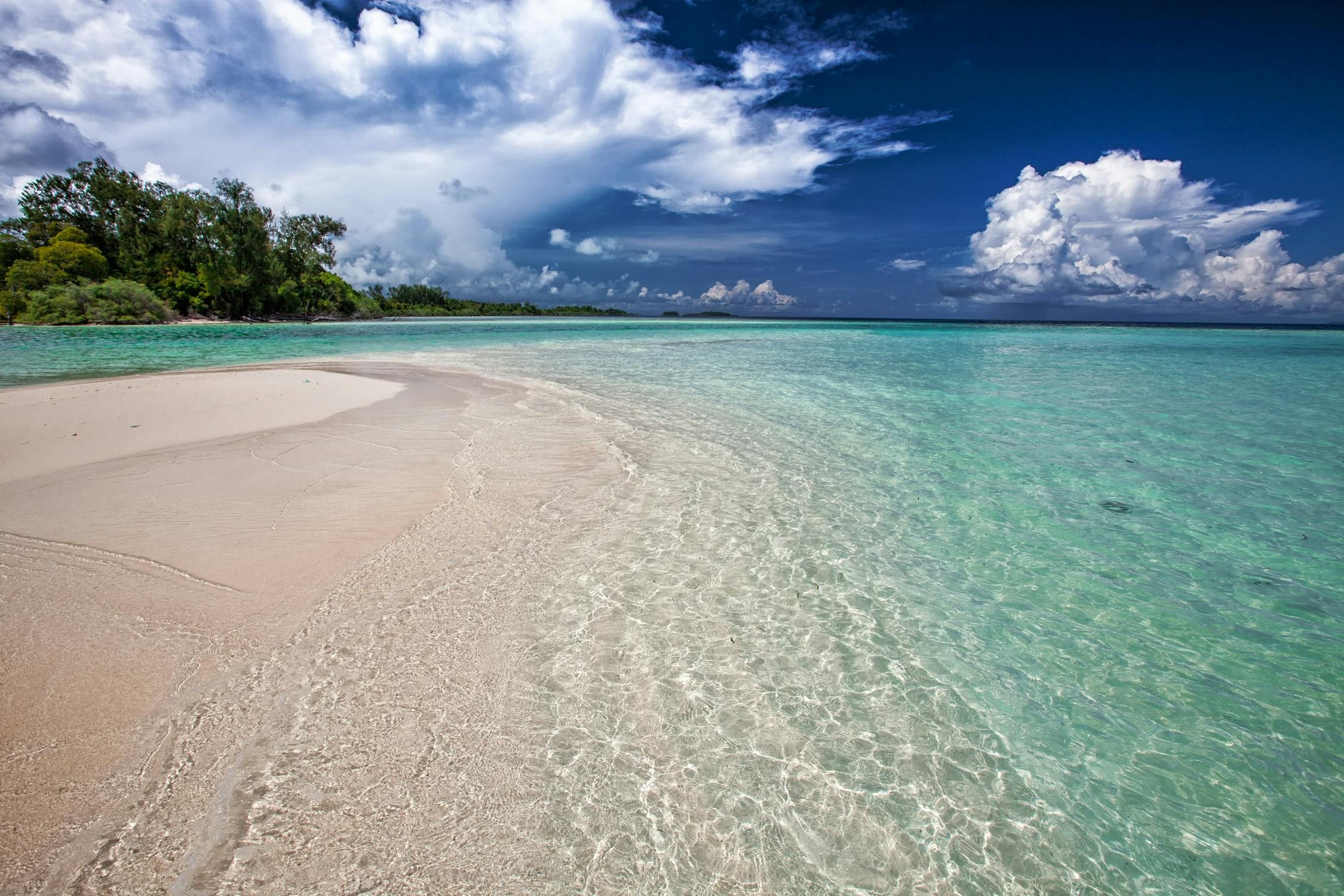 | 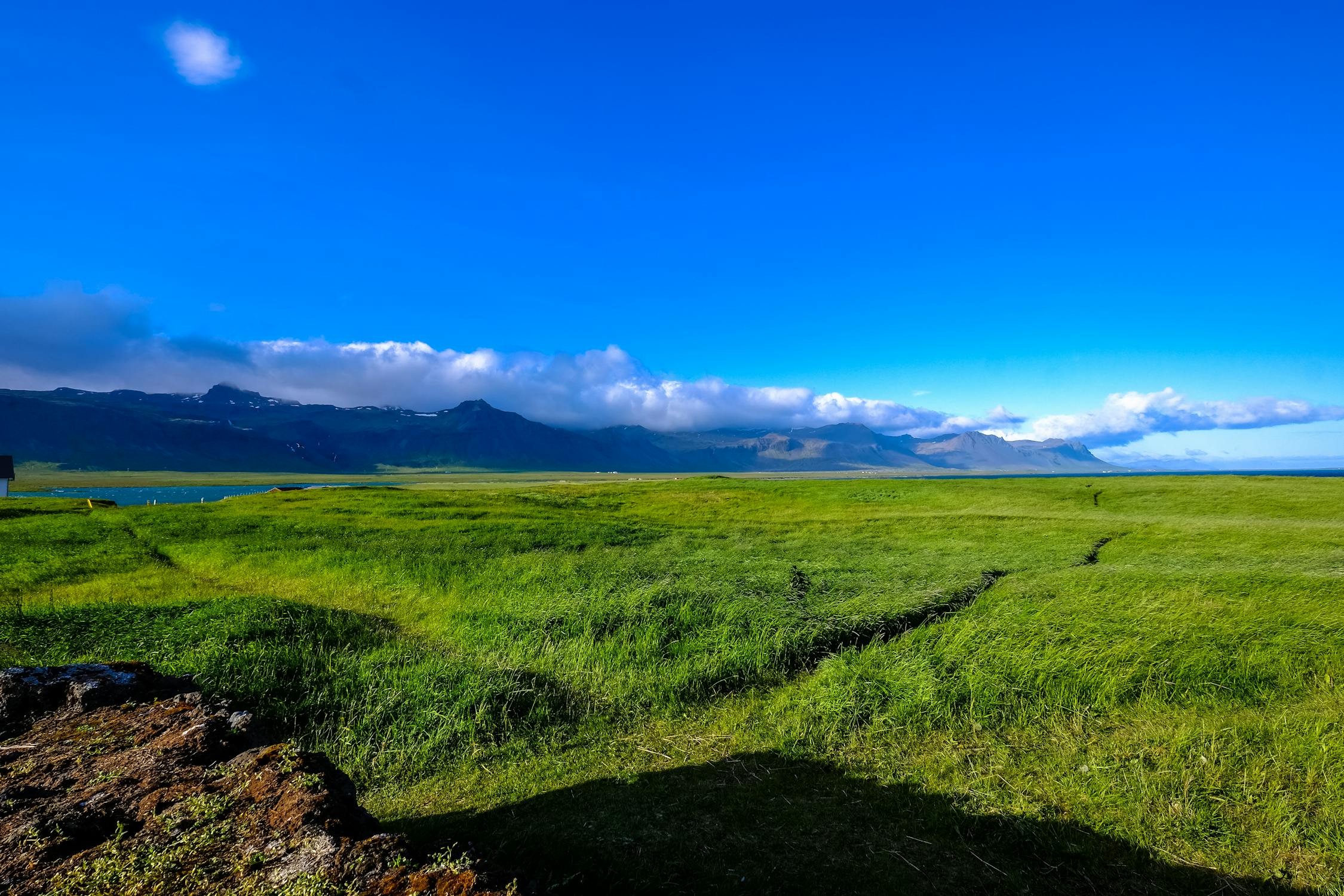 | 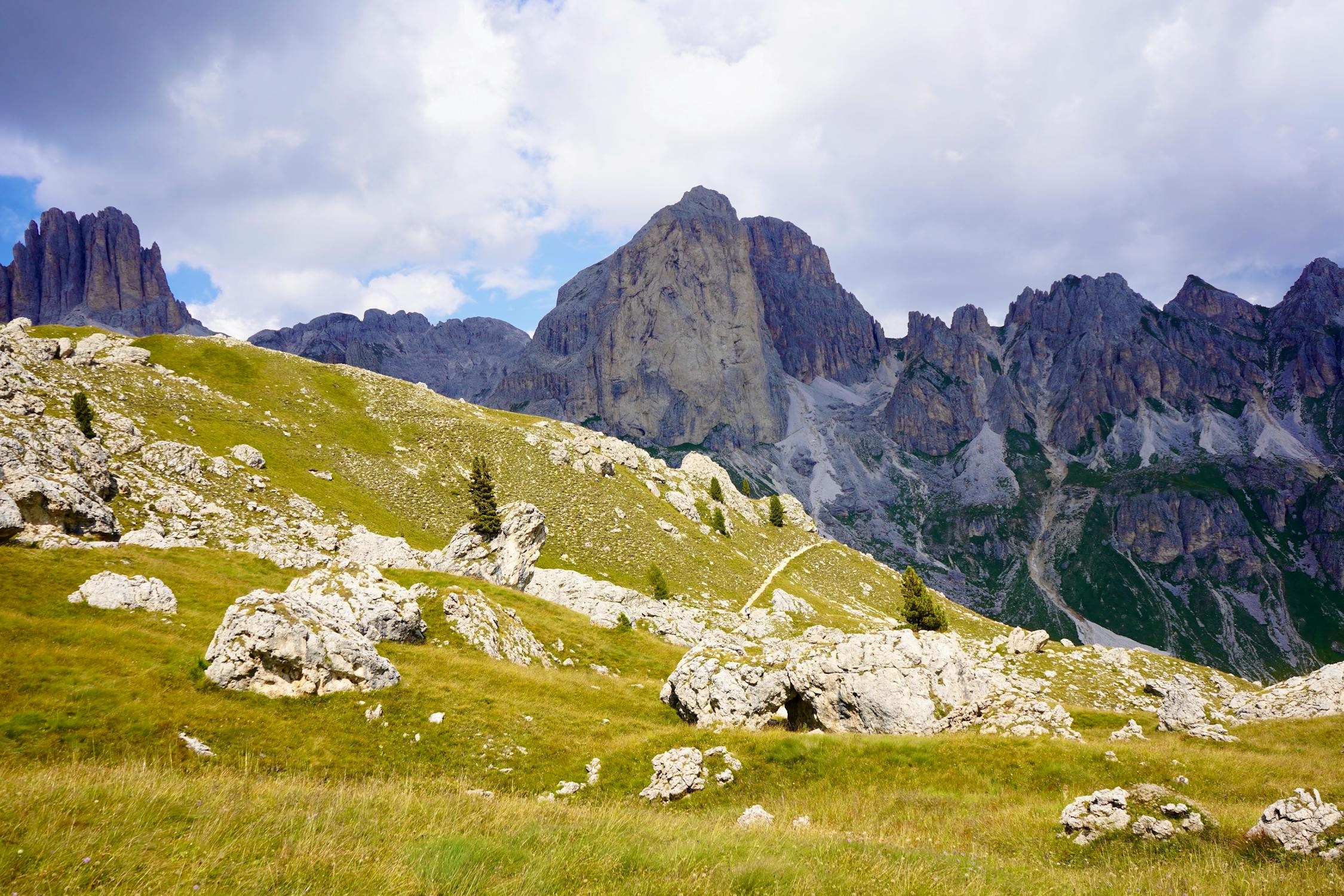 |
| h. Inland water | i. Coastal water | j. Flatland | k. Highland |
| Outer space | |||
 |  | ||
| l. Terrestrial space | m. Extraterrestrial space | ||
Figure a–m are images from Pexels (https://www.pexels.com/)
Three indicators (attention, affection, and stress) were selected to measure participants’ psychological recovery. Stress levels were continuously monitored using an Empatica E4 wristband, which recorded blood volume pulse (BVP) and HR. Wearable biosensors, such as electrodermal activity (EDA) and HR monitors, have been validated as reliable tools for affective computing [48]. Increased stress activates the sympathetic nervous system, leading to elevated HR and higher BVP levels, showing a positive correlation between stress levels and HR (Figure 2) [49]. The evaluation of attention was completed with a 5 × 5 Schulte table, and this test is a validated technique for estimating concentration and attentional shifts. The table consists of 25 cells containing the number between 1 and 25 in randomized order. Participants were required to find and click on the numbers in ascending or descending order as quickly as possible. The time taken to complete the task was used to calculate the level of attention. Mood was measured using the Positive and Negative Affection Scale (PANAS) [50]. Participants’ attention and mood changes were both measured using a pre-test and post-test. Perceptions of the VR environment was assessed using the VRRE evaluation system generated in the previous section. The testing methods are included in Appendix 1 (Supplementary material).
G*Power 3.1 was used to calculate the required sample size. The module F test was selected for ANOVA; Effect size was set to 0.5, α err prob was 0.05, and Power (1-β err prob) should be more than 0.8, set to 0.9 [51]. The sample size was finally calculated as n = 72, which means that it is necessary to collect at least 72 valid experimental samples to achieve the required sample size for the experiment. Forty-four participants were recruited from students at the School of Architecture, Harbin Institute of Technology. In this study, 44 participants were randomly assigned to experience two distinct VRRE conditions (out of 13 total) via computer-generated block randomization (block size = 4; Research Randomizer, www.randomizer.org), resulting in a total of 88 environmental exposures. This approach minimized variance in exposure frequency, with each environment experienced close to the theoretical mean (88 ÷ 13 ≈ 6.77 times). Specifically, six environments were experienced 7 times each, and seven environments were experienced 6 times each, maintaining a strict deviation limit of ±1 exposure. To obtain a more comprehensive experimental outcome, participants were selected to cover all majors in the School of Architecture, from undergraduate to graduate students. All participants were clear of tobacco, alcohol, and caffeine within 24 hours and were free of psychotropic substances in the past month. The descriptive characteristics of the participants are summarized in Appendix 2 (Supplementary material).
The experiment procedure is summarized in Figure 3. Participants first signed a consent form and completed Questionnaire 1, including personal information and the General Health Questionnaire (Appendix 3) (Supplementary material) [52]. Then, the researcher assisted participants in wearing the E4 bracelet, a device for recording and measuring physiological stress levels. During the stress-exerting phase, the participants’ stress level was raised through an English interview and a math oral arithmetic test. After the pressurization, the Schulte Test and the PANAS were administered. Next, participants wore a VR head-mounted display and performed a 4-minute roaming of the VRRE scene (recovery phase), followed by the Schulte test, PANAS, and VRRE perception evaluation form completion. During the virtual experience, participants can turn their heads and bodies freely (360 degrees surrounding) and move within the range of the monitor’s capture (10 m × 10 m). The handheld controllers further help them move around inside the VR scene.
Data analysts were blinded to group allocation throughout the study. Physiological data were anonymized and labeled with participant IDs that did not correspond to experimental conditions, preventing bias in analysis. Self-reported measures were collected via coded paper forms, ensuring that assessors could not associate responses with specific VR environments.
ANOVA assessed the impact of VRREs on college students’ attentional recovery, employing the rate of change in Schulte test scores before and after the VRRE experience as an evaluation criterion. The scoring rate was calculated using a specific formula:
ΔSC = (SC.b – SC.a)/SC.b
ΔSC—Rate of Schulte score change; SC.b—Schulte score before VRRE experience; SC.a—Schulte score after VRRE experience.
The Schulte test changed rates in various VRREs conformed to a normal distribution (ANOVA P-value = 0.048** ≤ 0.05), indicating a significant difference in participants’ attention recovery among different VRRE types. The one-way ANOVA chart shows that mean Schulte change rates for participants in all VR relaxation environments are above 0 and below 1, implying that all VRRE types contribute to attention recovery (Figure 4). Trend graphs depict the impact of 13 environmental types on attention recovery. Extraterrestrial space in the space environment showed the most effective recovery (ΔSC = 0.195), followed by flatland (ΔSC = 0.189), mixed forest (ΔSC = 0.173), and broad-leaf forest (ΔSC = 0.161), while other ΔSC values remained below 0.150 (Figure 5).
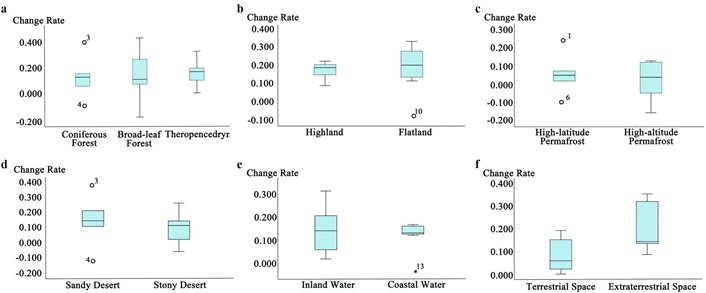
Rate of Schulte change boxplots. (a) Forest; (b) Grassland; (c) Tundra; (d) Desert; (e) Water; (f) Space
Participants used a 5-point Likert scale (From 1 = not at all to 5 = very strong) to rate positive affections and negative affections (both ten items) before and after immersion, with subsequent analyses computing based on the given formulas:
Positive affect (PA) change = PA (after VR – before VR) (indicates PA increment)
Negative affect (NA) change = NA (before VR – after VR) (indicates NA decrement)
Overall mood change = PA change + NA change
The PANAS reliability and validity testing produced satisfactory results. In the descriptive statistics scatter plot, PA change data showed significant variability, with 66% experiencing an increase and 34% a decrease. Conversely, NA change data had a more concentrated distribution, with 74% showing a decrease and 26% an increase. Overall, 72% of participants exhibited a positive change in emotional states after VRREs, suggesting a positive facilitating effect on emotional shifts to a certain extent (Figure 6).
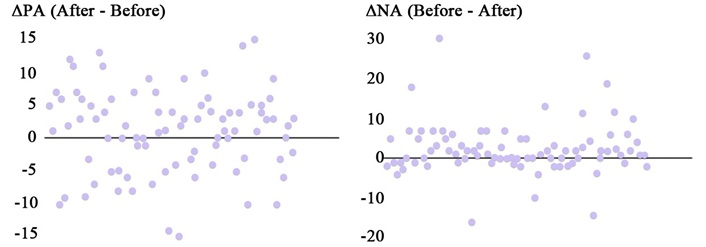
Positive and negative affection changes’ scatterplots. PA: positive affect; NA: negative affect
ANOVA analysis yielded a non-significant P-value (0.587 > 0.05), indicating no significant differences in positive emotion increase among participants in diverse VRREs. NA change data showed a significant difference (P = 0.008***) among VRREs according to Kruskal-Wallis’s test. Comparing NA change box plots (Figure 7), the mixed forest had the most significant reduction in negative emotions (ΔNA = 6.00), with box values consistently above 0. The flatland and terrestrial space also showed effective NA reductions (ΔNA = 4.00). High-latitude permafrost demonstrated notable NA decreases (ΔNA = 2.50), while stony deserts had a significant impact on NA (ΔNA = 1.00). Inland and coastal water had similar effects (ΔNA = 2.00), with inland water slightly outperforming based on box distribution.
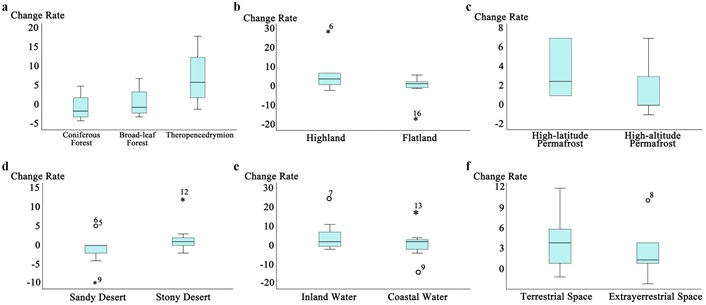
NA change boxplots. (a) Forest; (b) Grassland; (c) Tundra; (d) Desert; (e) Water; (f) Space
The experiment’s unit had three phases: baseline (Ta), pressurization (Tb), and recovery (Tc). The average of IBI data for each phase was calculated using the rate of change formula:
ΔIBI = (IBIb – IBIa)/(IBIb – IBIc)
ΔIBI—rate of change of IBI; IBIa—Ta baseline IBI mean value; IBIb—Tb applied pressure IBI average value; IBIc—Tc recovery IBI mean value.
The scatterplot analysis indicated that most data points are above 0, suggesting a positive IBI change rate and a reduction in stress levels for most participants in the VRREs. The average IBI change rate is 0.499, representing an overall stress recovery of 49.9%. The box plot reveals a median of 0.476, indicating a central tendency in stress recovery at around 47.6%, consistent with the overall average. The short interquartile range suggests minimal deviation among participants (Figure 8).
The Kruskal-Wallis’s test (P = 0.000*** < 0.05) revealed significant differences in IBI change rates among participants in various VRREs. The Figure 9 indicated that extraterrestrial space and high-altitude permafrost exhibited the highest and second-highest recovery effects (ΔIBI = 7.139, ΔIBI = 0.493). Terrestrial space followed closely (ΔIBI = 4.279). Recovery in flatland surpassed that in highland (ΔIBI = 0.308). Stony deserts showed significantly better recovery than sandy deserts (ΔIBI = 1.067). In aquatic environments, coastal water demonstrated superior recovery effects (ΔIBI = 2.520).
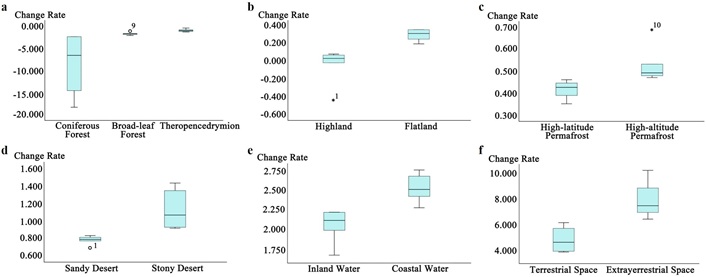
IBI change rate boxplots. (a) Forest; (b) Grassland; (c) Tundra; (d) Desert; (e) Water; (f) Space
Urban and rural planning and landscape architecture students showed better psychological recovery after VRRE, while students from other majors exhibited weaker effects on emotional and stress recovery. Attention indicators improved for students from all majors. Regarding academic levels, undergraduates experienced enhanced psychological recovery post-VRRE compared to postgraduates, while postgraduates excelled in PA enhancement (Figure 10).

Psychological recovery of participants in different majors and grades. PA: positive affect; NA: negative affect; IBI: inter-beat interval
Post-VRRE, attention improvements were observed in architecture (6.7%), urban and rural planning (13.3%), and landscape architecture (14.6%). However, 20% of architecture students, 15% of urban and rural planning students, and 6% of landscape architecture students did not experience improved attention levels. In emotional enhancement, urban planning students exhibited the most significant overall NA change (5.294 and 4.735). In the PA increment, other majors’ students performed the best with 2.1. Overall stress reduction scores were 10.802 for architecture, 1.034 for urban planning, and 0.928 for landscape architecture (Figure 11).
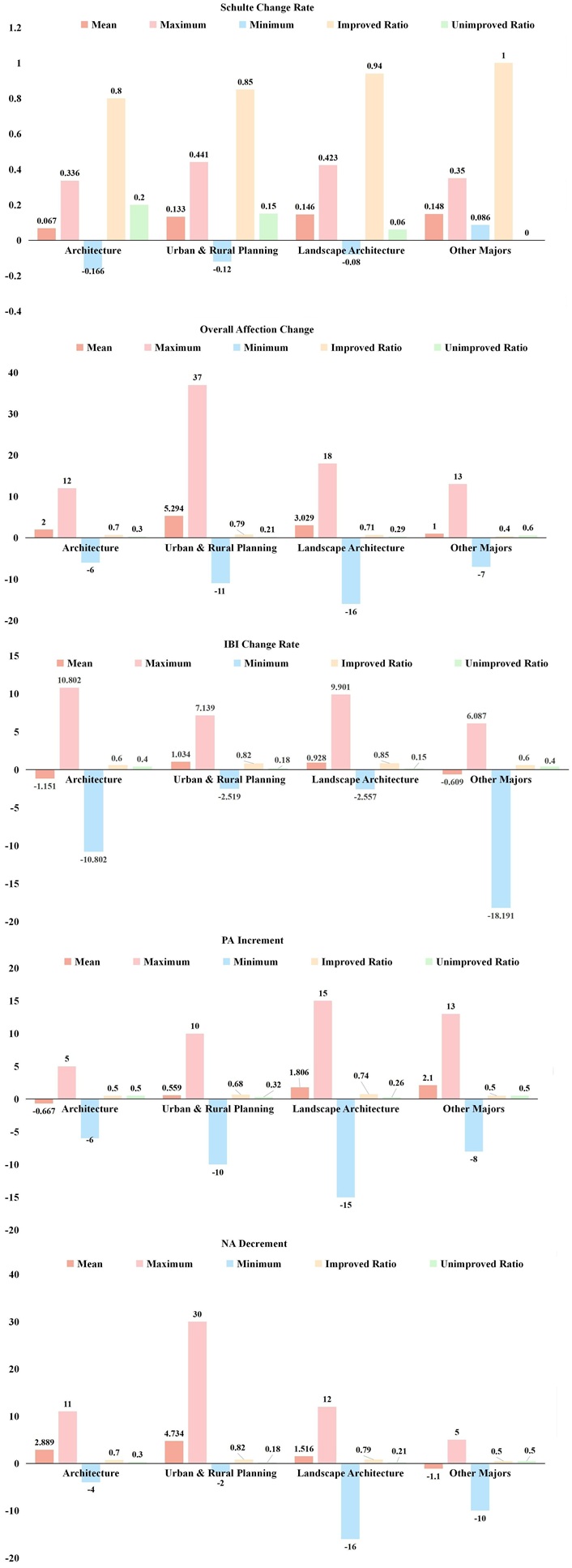
Psychological recovery details of participants with different majors. PA: positive affect; NA: negative affect; IBI: inter-beat interval
Students from various majors exhibited distinct recovery outcomes in VRREs. Attention notably improved in water, grassland, and forest settings, especially broad-leaf forest. Flatland significantly benefited architecture students, both at the undergraduate and master’s levels. Urban planning students recovered well in high-altitude permafrost settings. Landscape architecture students, particularly in extraterrestrial space, showed enhanced recovery in psychological stress and attention. Coniferous forest stands out as the most effective for overall psychological recovery among students from other disciplines. Notably, both undergraduate and master’s students experienced significant stress reduction in VR space, particularly extraterrestrial space (Figures 12 and 13).
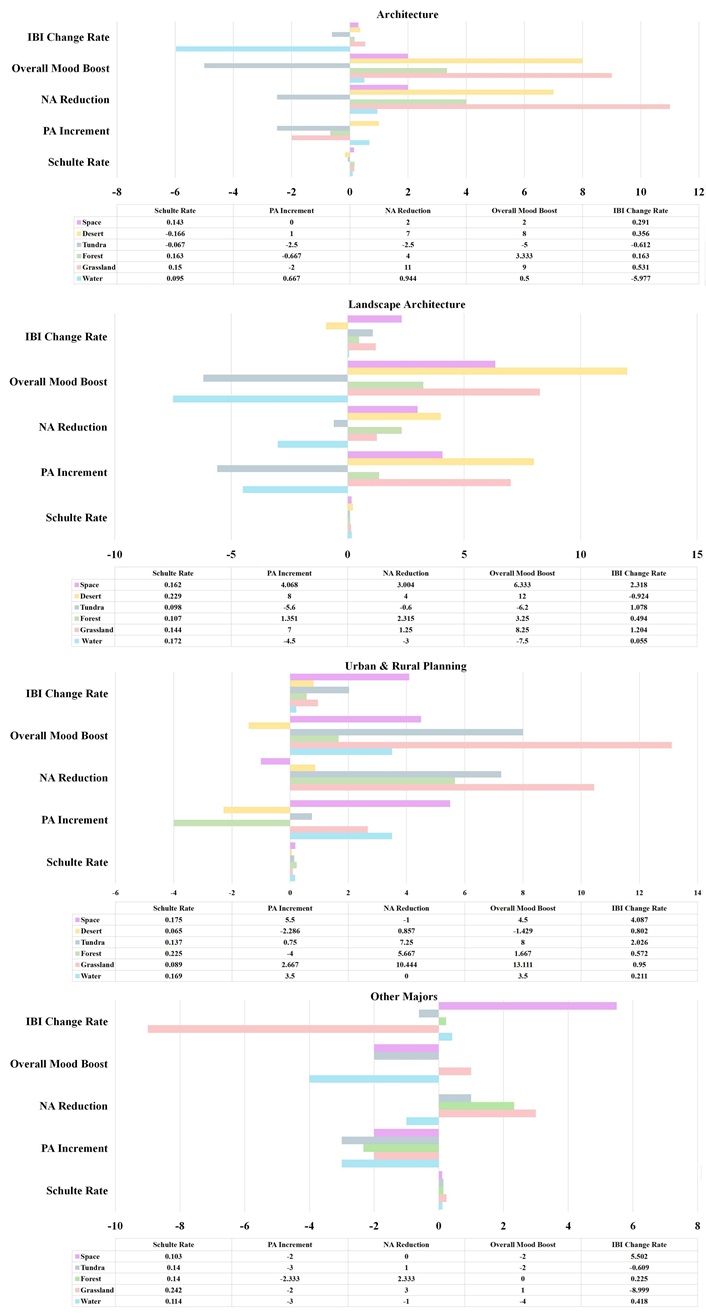
Psychological recovery of participants with different majors. PA: positive affect; NA: negative affect; IBI: inter-beat interval

Psychological recovery of participants in different grades. PA: positive affect; NA: negative affect; IBI: inter-beat interval
The self-assessment questionnaire on general health status includes three dimensions: anxiety and depression, social dysfunction, and loss of confidence [53]. Students facing self-assessed issues in anxiety, depression, and social dysfunction experienced the most significant improvement in psychological recovery after VRRE, showing notable enhancements in mood and stress levels. Meanwhile, participants dealing with anxiety, depression, and loss of confidence demonstrated the most effective attention restoration following the VRRE experience.
The VRREs had a comparable effect on the psychological recovery of individuals who self-assessed a single dimension of problems, whether related to anxiety and depression or social dysfunction. However, the VRREs showed a weaker effect on the psychological recovery of students self-assessing as healthy and those facing a single dimension of problems related to loss of confidence (Figure 14). Students with different self-assessed health conditions showed varied psychological recovery after VRREs experiences. The specific effect of the optimal environment is summarized in Appendix 4 (Supplementary material).
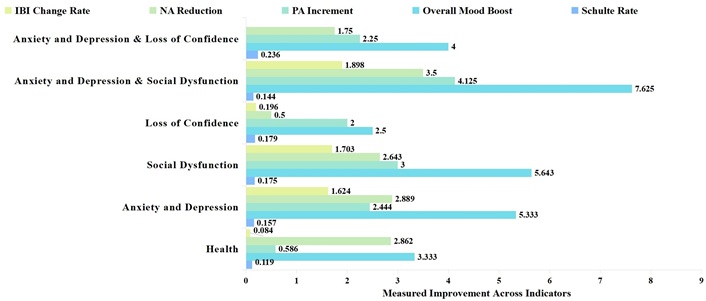
Psychological recovery of participants with different health self-assessment status
Participants provided their assessments of VRREs perception post-experience. The Cronbach’s alpha coefficients for all latent variables in the scale were in the range of 0.657–0.869, indicating that the latent and observed variables were set reasonable (Appendix 5) (Supplement material). SPSS 26.0 and IBM SPSS AMOS 28 Graphics were employed to construct a structural equation model, establishing a connection between the evaluation results and participants’ psychological recovery data. This facilitated the analysis of the relationship between the effects of each latent variable in the model. Figure 15 illustrates regression coefficients for path nodes, interpreted as least squares univariate linear regressions. The model’s goodness of fit was assessed through AMOS and SPSS, considering standardized path coefficients and P-values, and resulted in a good fit. Each path’s calculated P-value was compared with the standardized value of 0.05. A value less than 0.05 indicates a major influence relationship between variables. Among the 15 paths, 7 met a significant requirement. For instance, the largest standardized path coefficient was 0.621, indicating that for a one-unit increase in perceived VRRE soothing power, the participant’s attention recuperation increased by 0.621 units. This is similar to the other six significant paths (Figure 15).
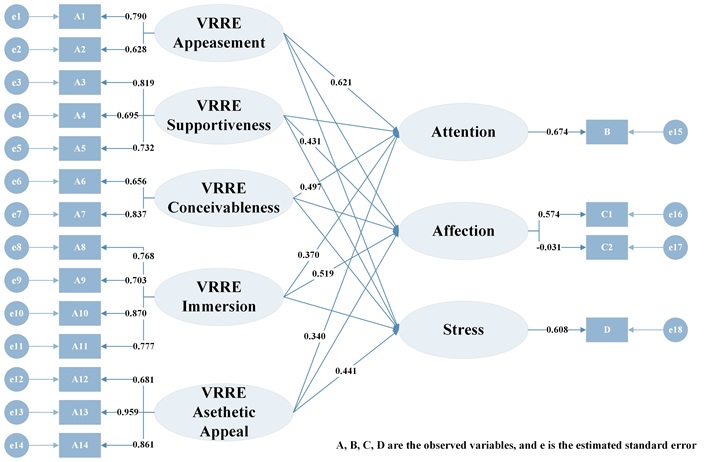
Standardized parameter estimation of the relationship between VRRE perception and psychological recovery of college students
VR environments significantly differ from real nature, and their specific mechanisms supporting effective resilience remain unclear. Examining diverse environmental characteristics for evidence-based health design is crucial [54]. These qualities are shaped by individuals’ experiences and perceptions [55]. To the best of our knowledge, this is the first investigation examining the relationship between the perception of VR therapeutic environments and psychological recovery. Statistical analysis revealed the highest overall score for VRRE immersion among five core categories. Participants strongly perceived VRRE immersion, including presence, detaching from reality, visually realistic, and spatial existence. Structural equation path analysis showed that VRRE immersion significantly and positively influences participants’ attention and emotions. This contrasts with traditional environmental studies focusing on features like color and vegetation. The strong perception of VRRE immersion further suggests that virtual natural environments themselves can serve as sources of therapeutic [56]. Especially when compared to natural images and videos, the vivid replication of natural scenes and rich simulated sensory information through virtual technology make participants feel as if the moment is truly happening. The heightened spatial existence strengthens their connection with environments. Therefore, the unique immersion in virtual environments influences individuals’ psychological, physiological, and cognitive responses, thereby enhancing the effectiveness of recovery [57].
VRRE appeasement and supportiveness comprise five primary facets: calm, soothing spirituality, optimism, accomplishment, and encouragement. Examining their psychological recovery effects through the attention restoration theory (ART) perspective, natural environments are observed to induce feelings of awe and wonder, leading to contemplation of spiritual meaning. Exposure to these environments fosters familiarity with one’s thoughts and feelings, resulting in “calmness”, “satisfaction”, and “inner freedom”. This profound tranquility reduces fear, enhancing a connectedness with the natural world and providing insights into life. This positive mindset prepares individuals for life tasks with increased capabilities and energy [15, 58]. Therefore, heightened perceptions of VRRE appeasement and supportiveness contribute to a more positive life outlook and increased satisfaction with family, work, and daily life.
Additionally, participants’ elevated scores in the VRRE conceivableness, specifically in association and storytelling, suggest a connection between direct virtual experiences and past nature-related memories. When exposed to similar virtual scenes or environmental stimuli, these memories are activated, triggering associations. This category’s perception of environmental experiences is closely tied to personal backgrounds and past experiences, especially childhood nature experiences. Evidence indicates that childhood nature experiences influence the connection between individuals and the natural environment [24]. Individuals raised in environments with richer natural settings, such as rural and suburban areas, exhibit a greater inclination to engage with nature [59]. The triggering of such memories enhances the calming and relaxing effects of virtual environments [60]. Ultimately, it influences individuals’ physical and mental recovery in virtual natural settings.
Combining all experimental results, extraterrestrial space, and grassland has a more significant impact on enhancing students’ psychological recovery. This variation in recovery effects across different natural environments is linked to individuals’ preferences for these settings, as indicated by stress reduction theory (SRT) and ART [61, 62]. “Fascinating”, a key concept in this theory, suggested that individuals prefer engaging environments over those perceived as boring or threatening. According to ART, environments perceived as fascinating engage involuntary attention through novel stimuli, thereby reducing cognitive fatigue and stress [16]. In this study, participants’ fascination with extraterrestrial space environments correlated with the highest stress reduction (ΔIBI = 7.139, Figure 9f). This aligns with ART’s proposition that fascination diverts attention from stressors to restorative stimuli. Our data suggests that the balance between novelty and perceived safety is critical. While space environments were novel, their vast, low-threat spatial features (e.g., open cosmic vistas) likely mitigated overstimulation, as supported by prospect refuge theory [63]. Thus, fascination in VRREs, when coupled with environmental coherence, enhances stress recovery.
Grassland and high-altitude permafrost (Figure 9a and c) share similar spatial features, meeting the criteria of the prospect refuge theory [63]. As shown in Figure 9c, high-altitude permafrost environments yielded a stress recovery rate of ΔIBI = 0.493, second only to extraterrestrial space. This aligns with the theory’s emphasis on “prospect” (open sightlines) enhancing perceived safety and reducing stress. Human self-protective mechanisms instinctively incline individuals towards spaces with better sightlines (high prospects). Both grassland and high-altitude environments provide participants with high-prospect vistas, aiding in their ability to perceive potential dangers and determine safety [64]. This also explains why, among three forest environments, the psychological recovery effects of broad-leaved forests are not as favorable as coniferous and mixed forest. The denser visual appearance of broad-leaved forests can obstruct sightlines (low prospects), while coniferous trees, with higher branching points and smaller leaf areas, present a well-ordered visual, offering a sense of security perception.
Desert and high-altitude permafrost exhibit homogeneous and singular environmental elements, providing a serene visual experience [65]. In environments with rich and diverse elements, students’ attention is likely to be distracted by over leading to more significant positive impacts on attention. Numerous studies emphasize water as a critical determinant of landscape preferences [66, 67]. In our study, the dynamic tides, refracted light from the waves, and the sounds of waves hitting the shore in the coastal water highlight the multisensory features of the water, contributing to a more relaxing experience for students.
Due to differences in environmental features, individual characteristics, past nature experiences, environmental expectations, and preferences, the suitability of distinct types of virtual natural environments varies among individuals. Therefore, it is an effective practice to provide a diversified selection of environments based on individual differences in restorative experiences and nature preferences. This can include considerations such as the analysis of different VR environment choices, as discussed earlier. While natural landscapes serve as a primary focus in VRREs, an alternative approach may involve incorporating virtual companions, such as pets or avatars of familiar individuals. Research suggests that social presence in VR can alleviate loneliness and enhance emotional well-being [68]. For instance, a virtual dog that responds to user gestures, mimicking real pet interactions, could offer emotional support. However, the mechanisms of restoration may differ—natural environments promote recovery through fascination and a sense of “being away” [16], whereas socially interactive VRREs may foster well-being through connection and companionship. Comparing these approaches could provide valuable insights, particularly for individuals with limited access to real-world nature or social interaction.
The application of VRREs is constrained by the VR equipment used. Opting for small, user-friendly, and cost-effective head-mounted display devices can meet the needs of individual experiences. These devices work well in small classrooms or public spaces, offering innovative stress reduction methods, especially in quiet environments for full immersion, meditation, or breaks. Semi-private spaces like exhibitions and sky-lit corridors, though less private, provide flexibility for students to engage in VR healing at any time. Equipping campus sports and fitness spaces with VR gear and showing VRREs to students during athletics contributes to green exercise in terms of duration and efficiency [22]. Additionally, comprehensive public social spaces, acting as communication hubs, not only strengthen staff-student relationships but also foster a culture of shared experiences, making VRRE more widely accessible.
The “CAVE” system, a large-scale projection-based VR device, addresses the limitations of single-person head-mounted devices. Projecting images on a room’s large screen or wall alleviates motion sickness and enhances compatibility for users wearing corrective lenses [69]. While demanding space and cost, this system can establish expansive VR healing spaces in school cafes, research institutes, etc., serving diverse purposes.
Compared to prior studies using static VR nature scenes [25], the dynamic environments in this study incorporated multisensory stimuli (visual motion, auditory waves), which may enhance immersion and stress recovery. This aligns with Yeo et al. [34] (2020), who found that 360-degree videos outperformed static images in mood enhancement. However, this study extends existing research by systematically comparing 13 environments and linking perceptual features (e.g., fascination) to physiological outcomes (ΔIBI), whereas most prior works focused on subjective measures alone.
Future research can focus on enhancing the quality of virtual environment simulations. Current non-immersive systems lack input/output features, providing minimal immersion. Partially immersive systems use 3D glasses and handheld controllers to enhance user interaction. Meanwhile, fully immersive systems, like HMD headsets or “CAVE” systems, offer the highest level of realism. Improvements in virtual environment simulations, utilizing models from engines like Unreal Engine or Unity 3D, can provide stronger spatial sensations compared to images, enhancing overall immersion [69].
Simulating multiple senses can significantly enhance users’ perception in virtual environments. In contrast, current VR environments focus on visual and auditory stimuli. Diversifying sensory stimuli contributes to a more realistic virtual experience. Immersive experiences in VR depend to a certain extent on the fidelity of sensory simulations, encompassing visual, auditory, olfactory, tactile, thermal, and airflow sensations, mirroring those experienced in real environments. For instance, simulating a forest environment involves not only visual elements like trees and auditory elements like bird calls but also mimicking subtle sensory stimuli such as the scents of flowers, grass, and soil, as well as air temperature, humidity, and airflow on the skin. Although tactile stimulation is currently limited in applications, research had explored using water touch to enhance overall environmental tactile experiences [70].
Optimizing VR content can further enhance its recovery quality. Simulating diverse native natural environments, such as wilderness, known for their therapeutic benefits, can be achieved rapidly and effectively through virtual technology. Virtual nature eliminates negative influences of the real world while presenting challenging and awe-inspiring locations that are difficult to access. Such as high-altitude snowy mountains, remote desert areas, outer space, and planets, satisfy human curiosity about the unknown and adventurous. Healing journeys are not confined to wilderness areas; urban parks and green spaces are also crucial resources, providing specific sites and spatial experiences. VR can recreate historical, cultural, geographical, or ecological scenes from the objective world, deepening people’s perception of specific spaces and fulfilling spiritual and cultural needs. VR allows access to these spaces, promoting mental well-being and enhancing social cohesion [71]. Despite technological limitations, designing virtual environments does not necessitate a complete replication of the real world but rather employs familiar structures and forms to help users’ perception and exploration.
This study, conducted during the COVID lockdown policy, recruited participants exclusively from the school of Architecture at Harbin Institute of Technology, limiting campus access to students. While this homogeneous sample controlled for disciplinary biases (e.g., landscape architecture students may have heightened nature sensitivity), it inherently restricts generalizability to broader student populations. To mitigate the limitations imposed by both the pandemic and the specific recruitment strategy, the sample size was maximized compared to similar studies, enhancing the research value and credibility, especially considering the challenges in conducting large-scale experiments for VR simulation environment research, which demands considerable time and resources. Future research should prioritize the following areas to enhance the external validity and depth of findings:
1. Diversification of participant demographics:
Future research should incorporate multi-disciplinary cohorts across universities in diverse geographic and cultural contexts to validate the universality of VRRE effects. Additionally, expanding age ranges (e.g., adolescents vs. adult learners) could reveal differential therapeutic needs. Furthermore, future studies should diversify participants across living environments, occupations, and cultural backgrounds to enhance the external validity of findings.
2. Improvement of measurement tools:
To achieve more accurate and in-depth measurements, future research should integrate multimodal measurement tools. For instance, eye-tracking can objectively quantify visual attention patterns during VRRE exposure (e.g., dwell time on specific environmental elements). Combining these data with physiological markers (e.g., HR variability) could reveal how visual exploration mediates psychological recovery.
3. Longitudinal study designs:
Future research could employ longitudinal study designs to assess the sustained effects of repeated VRRE use on academic performance and mental health outcomes. This design could reveal the long-term efficacy of VRRE and explore its impact variations across different time points.
This study broke through the limitations of existing virtual healing research by expanding virtual natural environments to a broader perspective. It measured and compared the positive effects of diverse VRREs on psychological recovery of university students. In terms of theoretical aspect, it was the first time to explore the influence factors of virtual environment perception, which complemented and extended the existing environmental perception theories. In the evidence-based experiments, the positive correlations between virtual environment perception and the psychological recovery indicators of the participants were verified. This finding enables the contribution of new insights and a deeper understanding of the mechanism of virtual healing. Students’ experience needs for VRREs can be clarified by analyzing the evaluation and differences in perception characteristics.
This study should benefit environmental designers, environmental psychology researchers, and campus administrators in understanding how virtual healing environments can affect student health and promote the well-being of university students. In a broader sense, VRRE is a nature-based alternative that can be utilized in the future for a wider range of populations beyond university students and can achieve more applications in urban to be a new health-enhancement approach. It has the unique advantage of simulating any scenario without restriction, providing a rich and distinctive immersive travel. As VR scenes evolve, more options will open up to suit the aesthetics and expectations of specific individuals, which will further strengthen the recovery. People will even have the opportunity to customize the elements and atmosphere of the setting to create their own virtual healing adventure.
ART: attention restoration theory
BVP: blood volume pulse
HR: heart rate
IBI: inter-beat interval
NA: negative affect
PA: positive affect
PANAS: Positive and Negative Affection Scale
VR: virtual reality
VRREs: virtual reality restorative environments
The supplementary material for this article is available at: https://www.explorationpub.com/uploads/Article/file/101155_sup_1.pdf.
We would like to acknowledge all those who contribute to this work through participating in experiments and interviews. During the preparation of this work, the authors used Chat GPT 3.5 to correct grammar. After using this tool, the authors reviewed and edited the content as needed and take full responsibility for the content of the publication.
CY: Conceptualization, Methodology, Software, Validation, Formal analysis, Investigation, Data curation, Writing—original draft, Writing—review & editing, Visualization, Project administration. TL: Conceptualization, Methodology, Supervision, Resources, Writing—review & editing, Project administration, Funding acquisition. BX: Conceptualization, Methodology, Supervision, Resources, Writing—review & editing, Funding acquisition. ZZ: Software, Writing—review & editing, Visualization, Data curation. All authors read and approved the submitted version.
The authors declare that they have no conflicts of interest.
The study was approved by the Research Ethics Review Board of the School of Architecture and Design, Harbin Institute of Technology, approval number: ERB-2021-10-15.
Informed consent to participate in the study was obtained from all participants.
Informed consent to publication was obtained from relevant participants.
The data will be available upon request.
This research was funded by National Natural Science Foundation of China [52378014]: Evidence-Based Construction of Campus Restorative Environment Based on Positive Psychological Promotion of College Students; the Heilongjiang Provincial Natural Science Foundation of China [LH2021E068]; the Key Entrusted Project of Teaching Reform Research Project of Heilongjiang Provincial Higher Education [SJGZ20200196]. The funders had no role in study design, data collection and analysis, decision to publish, or preparation of the manuscript.
© The Author(s) 2025.
Open Exploration maintains a neutral stance on jurisdictional claims in published institutional affiliations and maps. All opinions expressed in this article are the personal views of the author(s) and do not represent the stance of the editorial team or the publisher.
Copyright: © The Author(s) 2025. This is an Open Access article licensed under a Creative Commons Attribution 4.0 International License (https://creativecommons.org/licenses/by/4.0/), which permits unrestricted use, sharing, adaptation, distribution and reproduction in any medium or format, for any purpose, even commercially, as long as you give appropriate credit to the original author(s) and the source, provide a link to the Creative Commons license, and indicate if changes were made.
